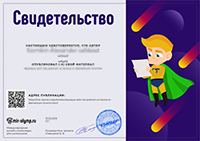Lesson plan template
| Unit of a long term plan Unit 1: All about me All about me
| School: №10 | |||||||
| Date: | Teacher name: Iskakova K.S. | |||||||
| CLASS: 2 | Number present: | absent: | ||||||
| Lesson title | Hello Again
| |||||||
| Learning objectives(s) that this lesson is contributing to (link to the Subject programme) | 2.L2 recognise with considerable support an increasing range of common personal questions 2.S6 use short answers appropriately in short, basic exchanges and take turns when speaking with others in a limited range of short, basic exchanges 2.L3 understand the main points of short, slow and carefully articulated talk on routine and familiar topics features such as colour and number 2.R2 identify, remember and sound out high-frequency sound and letter patterns 2.R3 read and follow with considerable support simple, words, phrases and sentences on familiar topics 2.S6 use short answers appropriately in short, basic exchanges and take turns when speaking with others in a limited range of short, basic exchanges | |||||||
| Lesson objectives | All learners will be able to:
Most learners will be able to:
Some learners will be able to :
Take a part in the short conversation without support
| |||||||
| Assessment criteria | learners will have succeeded in this class if they:
Followed the instruction immediately without support of a teacher Do correctly written exercises. | |||||||
| Language objective | Words stand up sit down open/close your book . structure this is my friend : | |||||||
| Values links | Respect and cooperation by:
Encourage each other | |||||||
| Cross-curricular links | Russian language and literature (naming things in Russian and English) lifelong learning, math | |||||||
| Previous learning | What do the learners already know or what should they know prior to this lesson? (main concepts, facts, formulas, theories) How can you activate the existing knowledge? | |||||||
| Plan | ||||||||
| Planned timings | Planned activities (replace the notes below with your planned activities) | Resources | ||||||
| Start
|
G) 6 – 8 learners come to the front of the class facing the board. Teacher touches shoulders randomly and learners should turn round and respond correctly to teacher’s greeting. Teacher invites another group and repeats greetings again Hi, I’m Tom. Hello, Kim, this is Ben. See you soon! Are you OK? Bye! Nice to meet you, Kim! How are you, Ben. Hi Tim, how old are you? etc
|
| ||||||
| Middle | G] Teacher models a circle activity with a ball. A ball thrower makes greeting /introduction/color/number to a ball catcher. The ball catcher responds appropriately and then becomes a ball thrower Step into the circles yourself to provide further support if necessary. Hello-Hi, What is your name?- My name is___. What color is your book?- It is ______. How old are you?- I am
Activity 2 (G) As above but teacher models introduction /plus a detail: Hi Kim. This is Sam [He’s seven / He’s my friend etc.] Again a ball-catcher responds appropriately and then becomes a ball thrower. (P) Teacher divides learners into pairs (more able learner with a learner who needs help.) learners will practice their speaking skills based on the dialogue. My name is _______.What is his (her) name? His name is ____. I am ___ years old. How old is he (she)? He(she) is __ Dynamic brake Stand up sit down open your book close your book clap Now children look at the pictures from exersise3 (I)Poulina could you say about first picture Stas could you say about second picture Ruslan could you say about third picture Now children let’do exercise 2 from activity book Look there are not letters here you should fill up the gap. What should you do? Formative work Topic: Hello again Learning objective 2.L2 Recognize with considerable support an increasing range of common personal questions Assessment criteria • Identify personal questions with considerable support Level of thinking skills Knowledge and comprehension Task Listen to the teacher and answer the questions. 1. What is your name? 2. How are you? 3. How old are you? 4. Where are you from? 5. Have you got a family? 6. Can I have your pen? 7. What colours do you see? 8. What is your favourite animal? 9. What is your favourite food? 10. What is your hobby?
|
| ||||||
| End | Reflexion I put on the board a sheet of reflection and ask the students to evaluate how well they have learned the lesson |
| ||||||
| Additional information | ||||||||
| Differentiation – how do you plan to give more support? How do you plan to challenge the more able learners? | Assessment – how are you planning to check learners’ learning? | Health and safety check | ||||||
| More support will be given to weaker learners by giving them a modified worksheets in some tasks with greater support | By means of oral formative assessment – students work in pairs making dialogs – teacher monitors for assessment |
Use safe, odour free glue | ||||||
| Reflection
Were the lesson objectives/learning objectives realistic? Did all the learners achieve the lesson objectives/ learning objectives? If not, why? Did my planned differentiation work well? Did I stick to timings? What changes did I make from my plan and why?
| Use the space below to reflect on your lesson. Answer the most relevant questions from the box on the left about your lesson. | |||||||
|
| ||||||||
| Summary evaluation
What two things went really well (consider both teaching and learning)?
1:
2:
What two things would have improved the lesson (consider both teaching and learning)?
1:
2:
What have I learned from this lesson about the class or individuals that will inform my next lesson?
| ||||||||


 1661
1661 83
83 Урок "Hello Again"
Урок "Hello Again" 